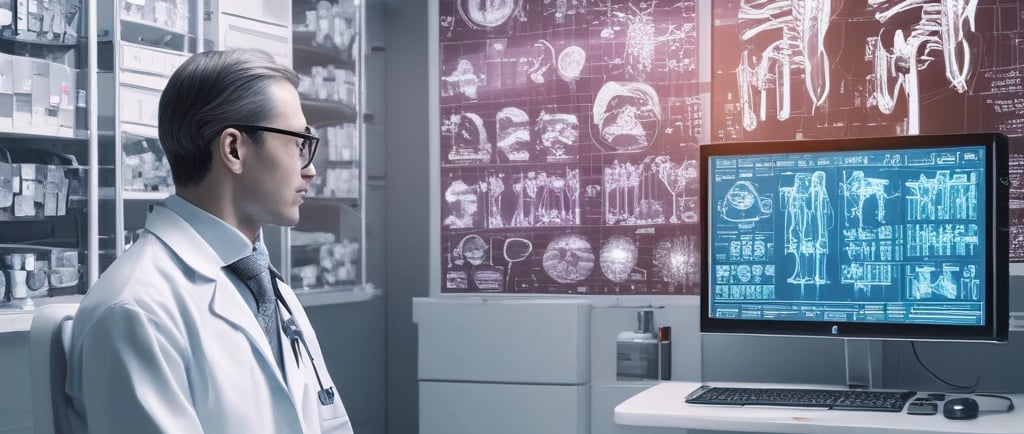Breaking Down Barriers: Why Interoperability and Data Sharing Are the Future of Healthcare
Healthcare’s future depends on seamless data sharing across systems and devices. Discover how improving interoperability is enhancing care coordination, boosting patient outcomes, and building a more connected, secure healthcare ecosystem.
3/28/20253 min read


Breaking Down Barriers: Why Interoperability and Data Sharing Are the Future of Healthcare
Imagine a world where every healthcare provider caring for a patient—regardless of location, specialty, or system—has instant, secure access to that patient’s complete medical history. A world where electronic health records (EHRs), imaging systems, laboratory reports, and wearable devices communicate effortlessly, giving clinicians the insights they need when they need them most.
This is the promise of interoperability: the ability of different healthcare systems and devices to exchange, interpret, and use data securely and seamlessly. As healthcare becomes more complex and data-driven, improving interoperability and data sharing is no longer a nice-to-have—it’s a critical imperative for improving patient care, reducing costs, and driving innovation.
The Current Challenge: Data Locked in Silos
Despite the widespread adoption of electronic health records over the past decade, many healthcare systems still operate in data silos. A patient’s medical history might be scattered across multiple hospitals, specialist clinics, and labs—stored in systems that don’t “talk” to one another.
This fragmentation leads to incomplete information at the point of care, duplicate tests, medical errors, and frustrating experiences for both patients and providers. It hinders care coordination, slows down treatment decisions, and limits the potential of data-driven healthcare.
Worse yet, when healthcare providers can’t access the full picture, patient safety and outcomes are at risk.
Why Interoperability Matters
Improving interoperability holds transformative potential across the healthcare landscape:
✅ Better Care Coordination: Seamless data sharing ensures that every provider involved in a patient’s care is on the same page—reducing gaps, redundancies, and conflicting treatments.
✅ Faster, More Informed Decisions: When providers have instant access to lab results, imaging reports, and medical histories, they can make faster, evidence-based decisions, especially in emergencies.
✅ Enhanced Patient Safety: Sharing data across systems helps prevent medication errors, allergic reactions, and adverse interactions by giving providers critical information at the right time.
✅ Empowered Patients: Interoperability supports patient-centered care by allowing individuals to access and share their health data with the providers and tools they trust.
✅ Data-Driven Insights: A connected ecosystem enables researchers, policymakers, and health systems to analyze population-level data for trends, outcomes, and innovations—fueling continuous improvement.
Technological and Policy Efforts Driving Change
Recognizing the need for interoperability, both technology developers and policymakers are stepping up efforts to break down data silos. Standards like FHIR (Fast Healthcare Interoperability Resources) are helping create common “languages” for data exchange between systems. APIs (application programming interfaces) are enabling different software platforms to connect securely and share information.
On the policy side, initiatives such as the 21st Century Cures Act and Information Blocking Rule are pushing healthcare organizations and vendors to make patient data more accessible and interoperable—while maintaining stringent privacy and security safeguards under HIPAA and other regulations.
At the same time, cybersecurity is at the forefront of interoperability conversations. Sharing data must never compromise its protection. Every connection point in an interoperable system must be secured with encryption, authentication, and continuous monitoring to prevent breaches and unauthorized access.
Interoperability in Action: Real-World Impact
The benefits of interoperability aren’t theoretical—they’re already making a difference:
➡️ Telehealth providers accessing EHR data to give virtual care teams the same insights as in-person providers.
➡️ Emergency departments retrieving patient histories from regional health information exchanges to guide urgent treatment.
➡️ Oncologists accessing genetic test results and prior imaging across systems to create precision medicine plans.
➡️ Home health agencies syncing remote monitoring device data with care teams to track patients’ recovery in real time.
Each example underscores how interoperability is saving time, improving care, and enhancing outcomes.
The Road Ahead: Collaboration Is Key
True interoperability won’t happen overnight—it requires collaboration across vendors, providers, policymakers, and patients. Healthcare organizations must prioritize investing in interoperable systems, holding technology partners accountable for open standards, and aligning policies that incentivize data sharing while protecting privacy.
At its heart, interoperability is about breaking down barriers to deliver better care. It’s about ensuring that data flows freely, securely, and meaningfully to support every patient’s journey.
The future of healthcare will be more connected, collaborative, and data-driven—and interoperability is the bridge that will get us there.
Partner with Two Wolves Defense and Security for IT solutions you can trust. Let our veteran-led team protect your data, streamline your operations, and deliver proactive, transparent, concierge-level IT services tailored to your business needs—so you can focus on what matters most.
813-419-7227
© Copyright TWO WOLVES DEFENSE AND SECURITY. All rights reserved.

